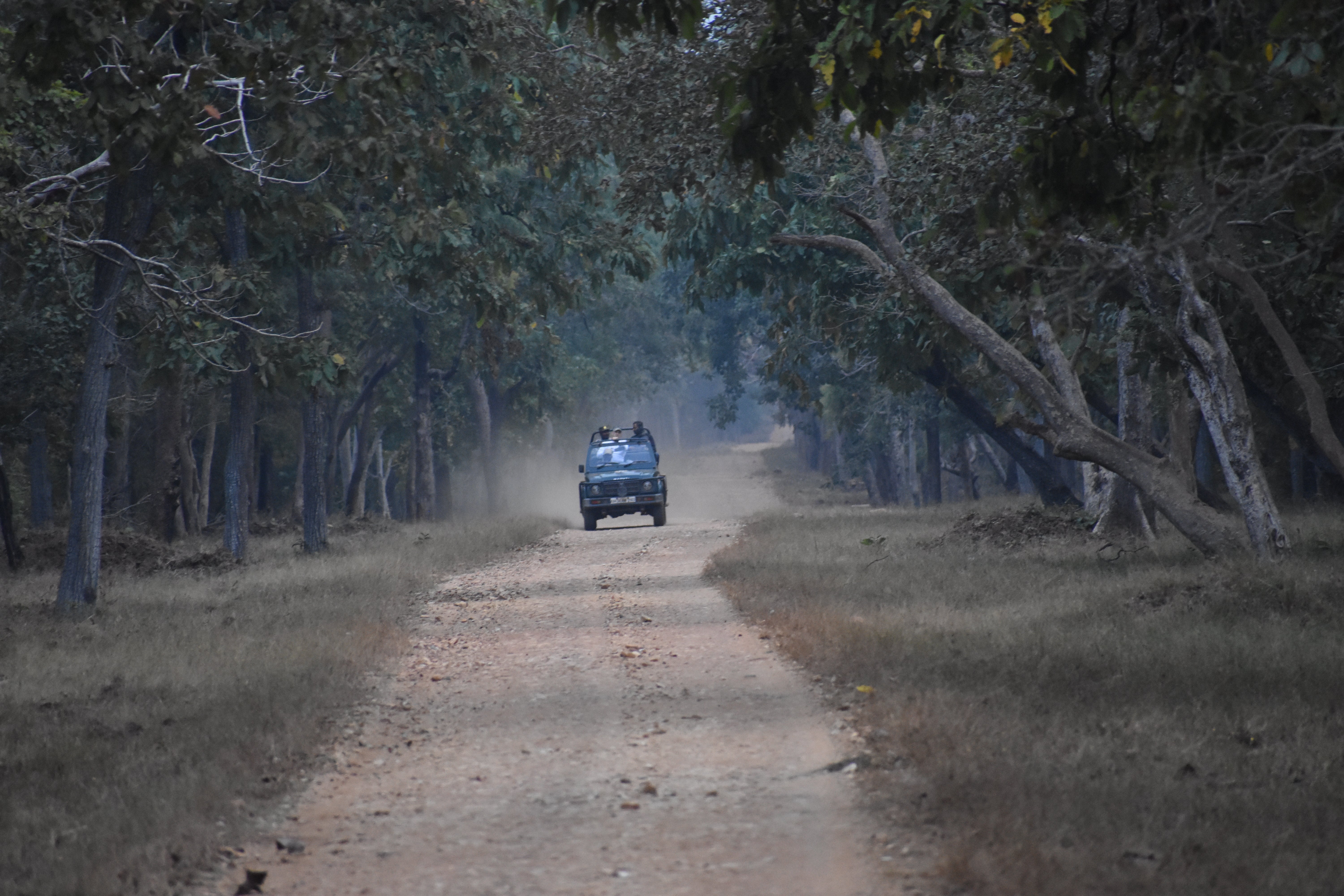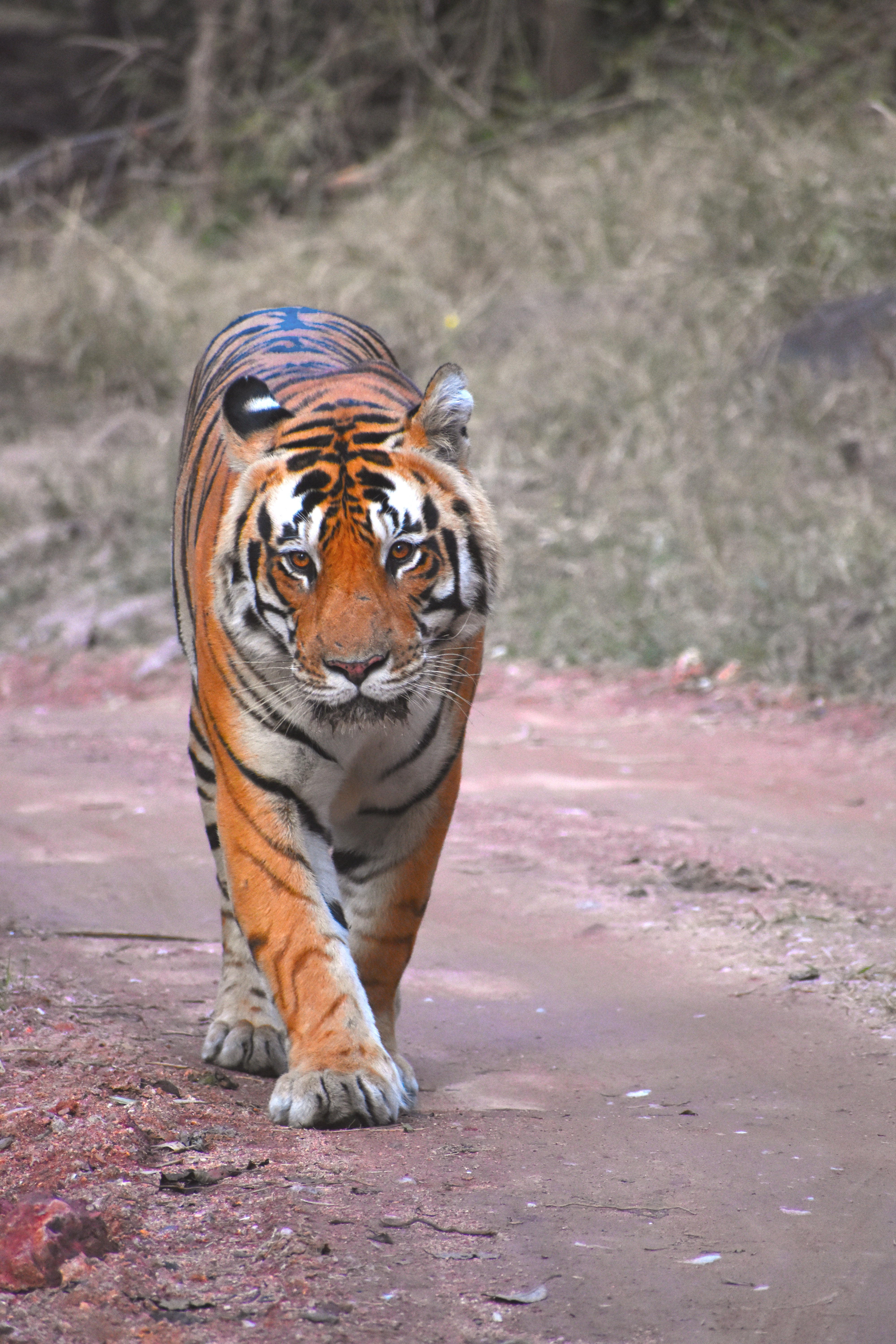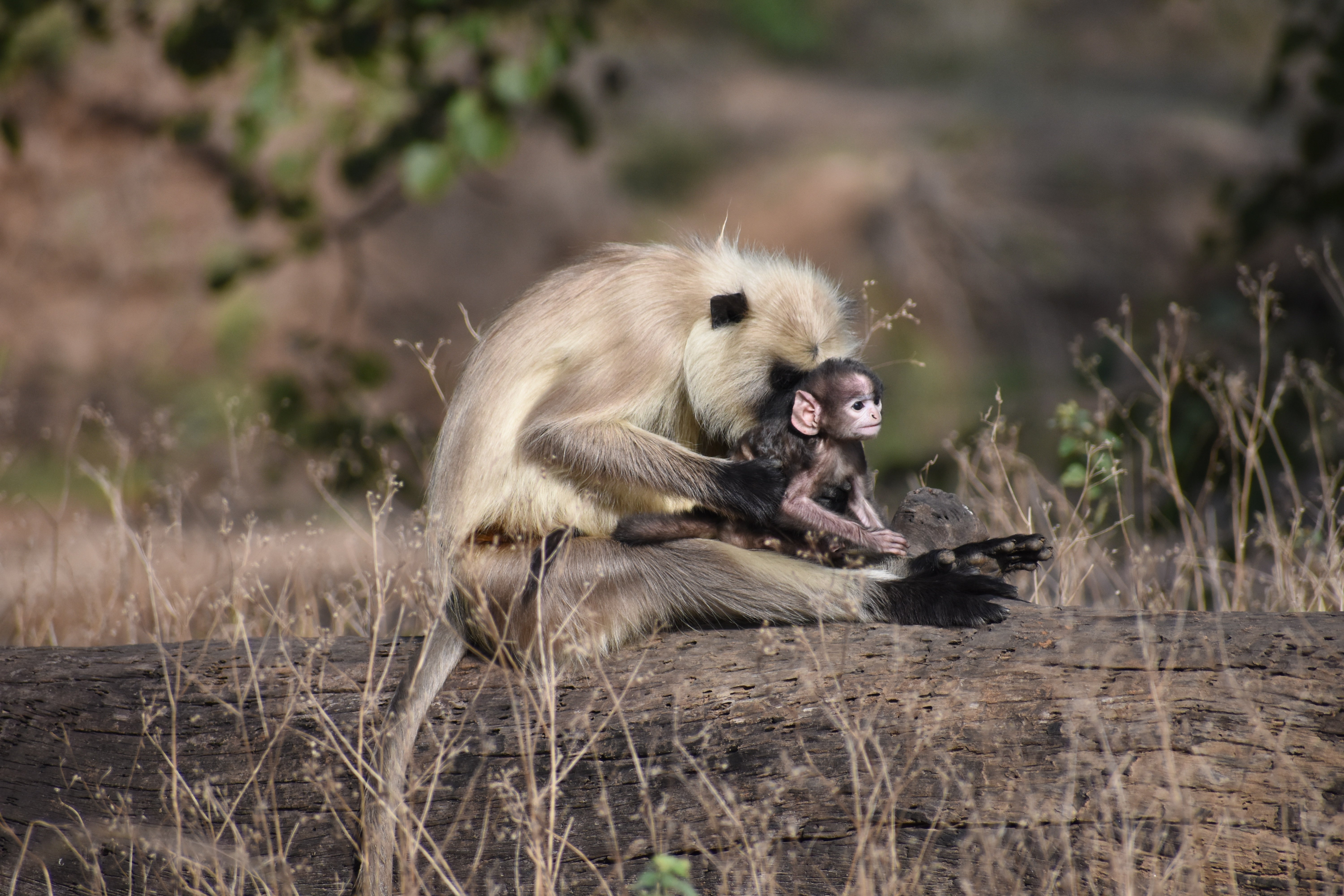Eye of the tiger: Why spotting these iconic big cats in India has never been easier
With India’s tiger population steadily on the rise, James Draven earns his stripes in some of the country’s best national parks


“I’ve never seen one,” says Sandeep, a 51-year-old Mumbai resident who has just clambered into the back of the open-top jeep in which I sit, parked outside the entrance of Tadoba Andhari Tiger Reserve. He shakes his head mournfully. This is not what I wanted to hear.
Even in the western Indian state of Maharashtra, at 6am in February it’s surprisingly frosty. I’m wrapped in a blanket and clutching a hot water bottle, despite six layers of clothing. Steam clouds from my lungs as I reply, asking him if this is, then, his first tiger safari.
His eyebrows make a valiant dash for a receding hairline: “I used to come here on safari with my family all the time when I was a child, I’ve visited Tadoba 20 times or more,” he says as my hopes begin to nosedive. “It is my life’s ambition to see a wild tiger!”
In contrast, this is my first safari at Tadoba, but mathematically – huddled in the back of this Brunswick-green, Maruti Suzuki 4x4 together – Sandeep and I both have the same odds of spotting an iconic Bengal tiger. OK, I am silently concerned that he might jinx this morning’s safari, but the truth is that today we have a better chance of seeing a wild tiger than at any other point in Sandeep’s whole life.

“It was harder back then,” he tells me, as the park gates open and 20 identical vehicles roll into the park. “There were hundreds of safari jeeps and far fewer tigers. It’s supposed to be easier to see them since the government took action. Actually, they now need to open new parks and relocate some tigers because there are too many competing for too little space.”
Thanks to the country’s conservation efforts, India – which is home to around 80 per cent of the world’s tigers – has seen the number of wild Royal Bengal tigers double since 2006, and increase by a third in the last four years alone.
According to India’s 2006 census, there were just 1,411 tigers remaining in the wild, but by 2014 that number had increased to 2,226. On 29 July 2019 (dubbed Global Tiger Day) Narendra Modi, the country’s prime minister, released the results of the 2018 All India Tiger Estimation (AITE), declaring that there were 2,967 wild tigers in the country.
“The tiger is an integral part of Indian mythology, folklore and poetry,” says Dr Anup Kumar Nayak from the National Tiger Conservation Authority (NTCA). “Project Tiger was launched by the government in 1973 for protecting our national animal and was, in 2006, converted into the NTCA with amended powers and functions to strengthen tiger conservation.”
It is my life’s ambition to see a wild tiger!
The NCTA’s initiatives over the past 14 years have been extensive, and include educating village populations near to parks on the benefits of conserving the species; relocating and rehabilitating communities who have formerly made a living from hunting tigers; financially remunerating locals who lose livestock to tiger attacks; increasing the amount of protected land in which the cats can roam; and supplementing existing park rangers with anti-poaching squads bolstered by ex-army personnel. With the creation of the Special Tiger Protection Force (STPF), the government is sending a clear message: harming tigers will not be tolerated.
“Punishment for killing a tiger is imprisonment for not less than three years and a fine not less than 10,000 rupees (£104), which can be extended to seven years and a fine in excess of 25,000 rupees (£260) for a subsequent offence,” Dr Nayak tells me.
Perhaps most boldly, tourists can now access only 20 per cent of India’s national parks and tiger reserves, giving tigers the range and privacy to thrive, unseen, in the remaining 80 per cent.

“Apart from generating a livelihood and employment for local people – whose support is essential for successful conservation programmes – ecotourism plays an important role in the education of the general public,” says Nayak, but insists: “The parks’ core areas are to be kept inviolate: low impact ecotourism is restricted to a maximum of 20 per cent of such areas.”
So, despite a burgeoning population, the elusive, solitary tiger can still be tough to spot. Sandeep has to force a smile when we pull up outside the gates of Tadoba and he’s reunited with friends who jump out of another jeep and breathlessly greet him in garbled Hindi. As part of local initiatives to minimise the impact of tourism, radios and phones are prohibited within the park; Sandeep’s beaming friends have sighted a tiger but – since visitors, guides, and drivers are forbidden from communicating cats’ locations to others – Sandeep and I have not.
Unlike lions, which live in prides and are relatively easy to view, moving en masse across an African savannah, tigers are solitary creatures: evanescent ambush predators that prowl dense forests alone, only ever socialising to mate.
Sure, they might be corn-puff orange, vibrant and jagged with slashes of bone-char black – looking every bit as if a polar bear has been left alone with a toddler, a marker pen, and an almighty bag of Wotsits – but they are surprisingly well camouflaged.
Tourists can now access only 20 per cent of India’s national parks and tiger reserves, giving tigers the range and privacy to thrive
Tigers’ main prey – chiefly deer and boar – have just two types of colour receptors in the eye, which means they are red-green colour blind. For them, tigers’ orange fur blends in with the forest’s greens, which makes India’s apex predator even more elusive for them than we humans. Regardless, it’s only when you’re actually trying to spot them through tangles of jungle undergrowth that you realise quite how much bamboo leaves look like tiger stripes.
Ultimately though, it’s a game of chance. While native Indian Sandeep has never spotted a tiger in all of his 51 years, an Australian tourist I met at Bandhavgarh National Park in the neighbouring state of Madhya Pradesh was fortunate enough to see two tigers and a rare sloth bear during her very first, four-hour game drive.
I wasn’t so fortunate at Bandhavgarh, but I’m willing to put the time in to swing the odds in my favour. During my trip, I’ve been on 10 safaris over five days, across four national parks and two states. I’ve risen at 5am each morning to scan dewdrop-bejewelled dawn landscapes for signs of movement. Every afternoon, I returned to train my eyes on waterholes, on the tree line, scouring wind-rippled grasslands for signs of unusual movement under the blazing sun.
I’ve spent over 45 hours waiting: holding my breath each time the birds send out their cacophonous alarm calls, standing in motionless expectation while panicked langur monkeys scramble up trees and sambar deer scatter. All the time hoping to spy a tiger prowling the densely populated Bandhavgarh National Park; to catch one stalking the sal forests of Kanha Tiger Reserve in my peripheral vision; to come face to face with a real-world Shere Khan in Pench National Park, the inspiration for Rudyard Kipling’s The Jungle Book; or simply to watch them basking in the scorching sunshine at Tadoba Andhari Tiger Reserve, with my new pal Sandeep beside me.

“Tigers are seen in Kanha every two to three drives,” says Kanha Earth Lodge manager Harpreet, a former naturalist who still goes out on safari with his hotel guests on a daily basis. I have two days and four safari trips scheduled here, and Harpreet’s estimation is bang on the money.
The sun is starting to set on my second drive around Kanha Tiger Reserve. As the light fades and the forest around me takes on pastel hues, so too do my hopes of seeing a tiger today.
My driver is already winding a sinuous course back towards the park gates and my guide’s eyes have begun to glaze when a tiger identified as M1 paces out from the trees and onto the track.
There have been no alarm calls, no shrieking monkeys, no stampedes foretokening his arrival. All has been still and quiet, but nonetheless it’s as if M1 has hit the mute button on the jungle: he brings with him a deafening silence.

After an eternity measured in nanoseconds, my guide and driver fill the air with excited chattering and the engine revs as they manoeuvre the jeep into a better position for me to take photographs, turning around and hurriedly reversing me towards the hulking predator.
M1, they tell me, is odds-on favourite to be the next alpha male in these parts, and although Kanha’s heir to the throne is still pink in the nose (tigers’ noses darken to brown with age), he strides along the path with king of the jungle confidence.
As he pads silently towards me – while my jeep noisily grinds into first gear and lurches slowly away from him again – the young tiger looks me directly in the eyes. I realise that, as we’ve fruitlessly searched for him, wrapped in blankets and fussing over camera settings, he’s been here all along, mere feet away in the undergrowth. And simply by deciding to show himself, by pacing unafraid into the open, our world is suddenly a very different place.
Sandeep may not have yet seen a tiger in India’s national parks, but they’ve certainly seen him.
Travel essentials
Hayes & Jarvis offers a 15-day In Search of Tigers tour priced from £4,099 per person including flights, accommodation, most meals, the Agra-Katni overnight train, safari drives in four national parks – Bandhavgarh, Kanha, Pench and Tadoba – transfers, excursions, and a stay in the Taj Mahal Palace hotel in Mumbai.






Join our commenting forum
Join thought-provoking conversations, follow other Independent readers and see their replies
Comments